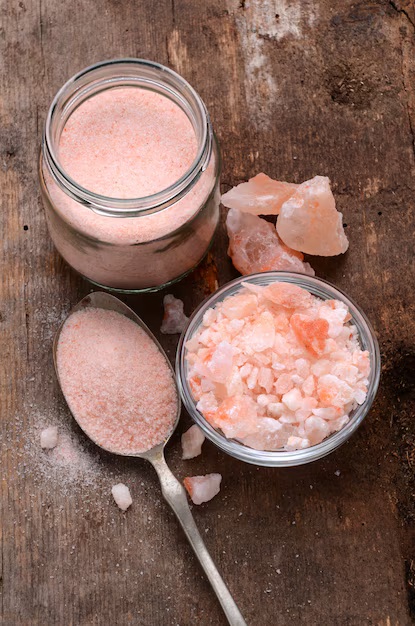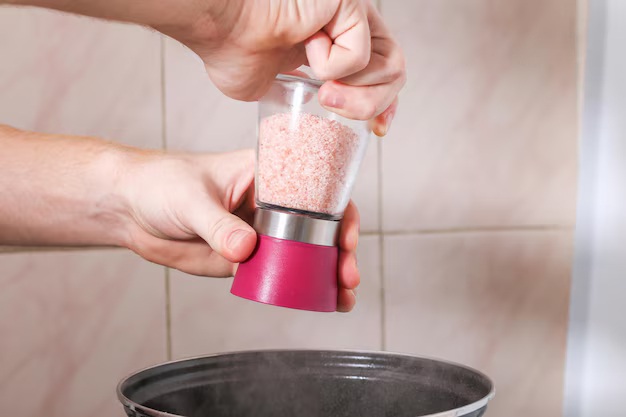Does Pink Salt Really Work? Myths vs. Science Explained
Pink Himalayan salt has become a buzzword in health and wellness circles, often touted as a more natural and beneficial alternative to regular table salt.
Whether you’ve spotted it in a gourmet kitchen, a yoga studio, or even dissolved in a glass of warm water on social media, pink salt is having a moment.
But beyond the aesthetic and trendy appeal, many people ask: Does pink salt really work? Is it genuinely better for your health, or is it just another wellness fad?
In this blog post, we at www.sportandmedicalsciences.org will delve into the claims surrounding pink salt, analyze its composition, benefits, and risks, and evaluate whether it truly deserves a place in your pantry or daily wellness routine.

What Is Pink Salt?
Pink Himalayan salt is a type of rock salt that is mined primarily from the Khewra Salt Mine in the Punjab region of Pakistan. It gets its distinctive pink color from trace minerals such as iron, magnesium, calcium, and potassium.
Unlike regular table salt, which is heavily processed and stripped of most minerals, pink salt is often marketed as a more natural and mineral-rich alternative.
Composition: How Does Pink Salt Differ from Table Salt?
Both pink Himalayan salt and regular table salt are primarily composed of sodium chloride. However, pink salt typically contains up to 84 different trace minerals, albeit in minute quantities. These include:
- Iron – Gives the salt its pink hue.
- Magnesium – Vital for muscle and nerve function.
- Calcium – Important for bone health.
- Potassium – Helps regulate fluid balance and muscle contractions.
Despite these additional elements, the actual mineral content in pink salt is quite low, often constituting less than 2% of the total weight.
Common Health Claims About Pink Salt
Advocates of pink Himalayan salt often make a wide range of health claims, including:
- Improved Hydration
- Better Mineral Absorption
- Balanced Body pH
- Detoxification
- Enhanced Respiratory Health
- Improved Sleep Quality
- Increased Libido
Let’s unpack these claims one by one and examine what science has to say.
1. Improved Hydration
Proponents claim that pink salt helps with better hydration due to its trace mineral content. While it’s true that electrolytes like sodium and potassium are essential for maintaining fluid balance in the body, the small quantities found in pink salt are unlikely to make a significant difference compared to regular table salt.
2. Better Mineral Absorption
Some believe the trace minerals in pink salt are more bioavailable, meaning the body can absorb them more easily. However, scientific studies do not support this claim. The quantities of these minerals are so low that their health impact is negligible.
3. Balanced Body pH
The idea that pink salt can alkalize the body and balance pH levels is a common wellness myth. Your body tightly regulates its pH balance through the lungs and kidneys, and what you eat or drink has minimal effect on your systemic pH.
4. Detoxification
Detox claims are popular in the wellness community. Some say pink salt helps remove toxins from the body when used in baths or consumed in water. However, the human body is already well-equipped with organs like the liver and kidneys to detoxify itself. There is no credible scientific evidence supporting the detoxifying effects of pink salt.
5. Enhanced Respiratory Health
Salt therapy, or halotherapy, often involves inhaling salt particles in a controlled environment. While some studies suggest that salt inhalation may help people with respiratory issues like asthma or bronchitis, there is limited evidence that pink salt specifically offers unique respiratory benefits.
6. Improved Sleep Quality
There’s a belief that pink salt can promote better sleep by reducing stress hormones like cortisol and improving electrolyte balance. While maintaining proper electrolyte levels is essential for sleep, there’s no specific proof that pink salt is more effective than other forms of sodium.
7. Increased Libido
Claims around libido enhancement are often anecdotal. There is no substantial scientific backing that links pink salt with increased sexual drive or performance.
The Psychological Factor: The Placebo Effect
One reason people might feel better after using pink salt could be due to the placebo effect. If you believe that a particular product will improve your well-being, you might experience perceived benefits, even if there’s no physiological basis.
This doesn’t mean the benefits are fake — the placebo effect can be powerful. However, it’s crucial to distinguish between perceived and scientifically proven outcomes.
Culinary and Practical Uses of Pink Salt
Despite the lack of strong evidence supporting the health claims, pink Himalayan salt is widely used for its culinary and aesthetic value:
- Cooking and seasoning – It has a coarser texture and a slightly different flavor profile.
- Salt lamps – Used for decorative purposes and claimed to purify air.
- Bath soaks – Said to soothe sore muscles and improve skin health.
- Salt blocks – Used for grilling and serving food.
These uses can be enjoyable and functional, even if they don’t necessarily deliver unique health benefits.

Is Pink Salt Safer Than Table Salt?
Some people assume pink salt is healthier or safer because it’s “natural.” However, sodium is sodium, and excessive intake of any type can lead to health problems such as:
- High blood pressure
- Cardiovascular disease
- Kidney problems
The American Heart Association recommends limiting sodium intake to less than 2,300 mg per day, regardless of the salt source.
Scientific Consensus on Pink Salt
The scientific and medical communities generally agree that while pink salt may offer minor trace minerals, its health benefits are largely overstated. A balanced diet rich in fruits, vegetables, whole grains, and lean proteins will provide far more nutrients than you could ever gain from using pink salt.
When Pink Salt Might Be Useful
There are a few niche scenarios where pink salt could be a viable option:
- Natural product enthusiasts – If you prefer less processed foods.
- Special diets – Some people on paleo or natural diets may opt for it.
- Gourmet cooking – Its texture and color can enhance dishes.
But in these cases, the benefits are more culinary or personal preference than medical.
Final Verdict
Pink salt is not a miracle healthy food. While it’s a beautiful, natural product with trace minerals and a unique taste, the scientific evidence does not support many of the extravagant health claims.
If you enjoy using it for its color, texture, or flavor, there’s no harm — just remember that moderation is key, and it should not replace a balanced diet or sound medical treatment.
At www.sportandmedicalsciences.org, our goal is to help you make informed decisions about your health and wellness based on science, not hype.
References
- American Heart Association
Sodium and Salt Intake Guidelines
https://www.heart.org - National Institutes of Health (NIH)
Office of Dietary Supplements – Fact Sheets
https://ods.od.nih.gov - Mayo Clinic
Salt: Is it good or bad for you?
https://www.mayoclinic.org - Journal of Clinical Hypertension
He, F.J., & MacGregor, G.A. (2010). Reducing population salt intake worldwide: From evidence to implementation.
https://onlinelibrary.wiley.com/journal/17517176 - Harvard Health Publishing
Detoxes and cleanses: What you need to know
https://www.health.harvard.edu